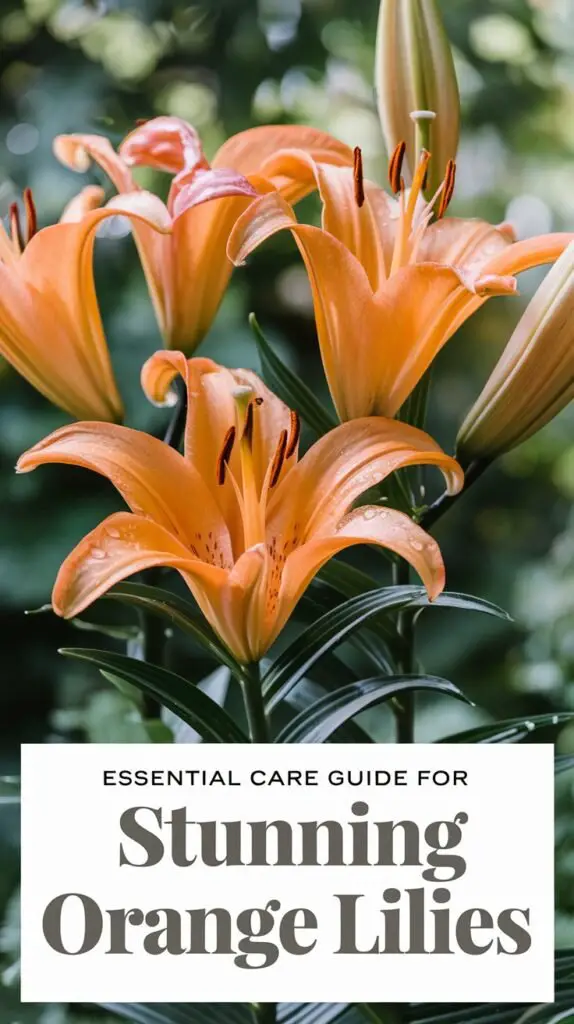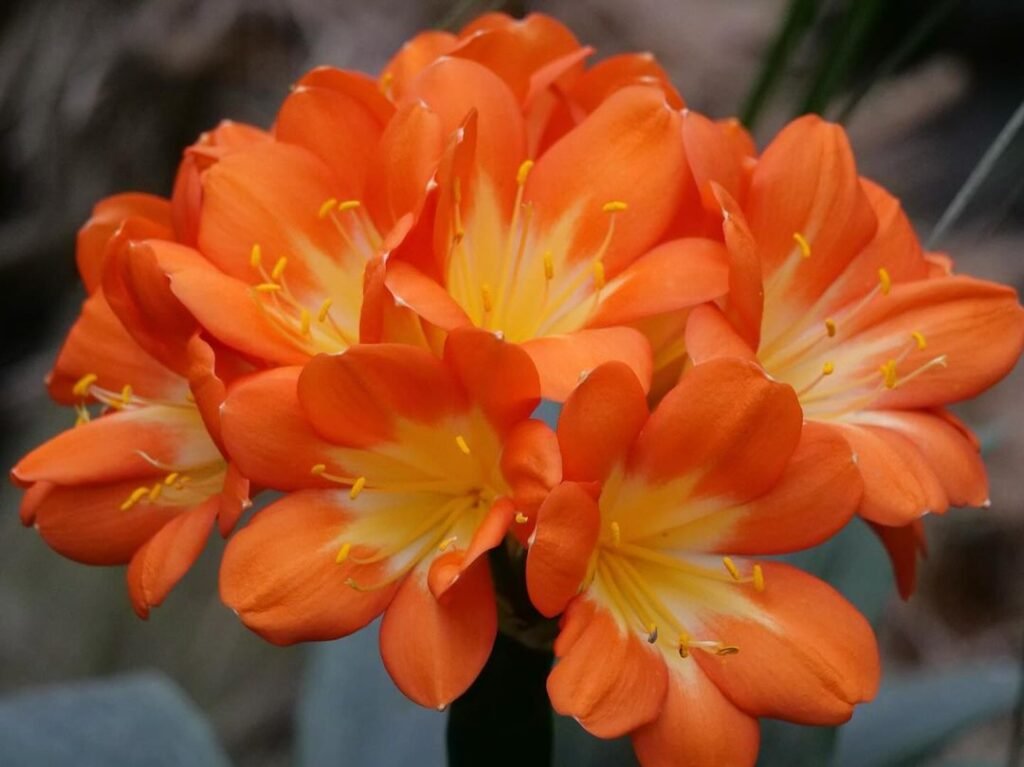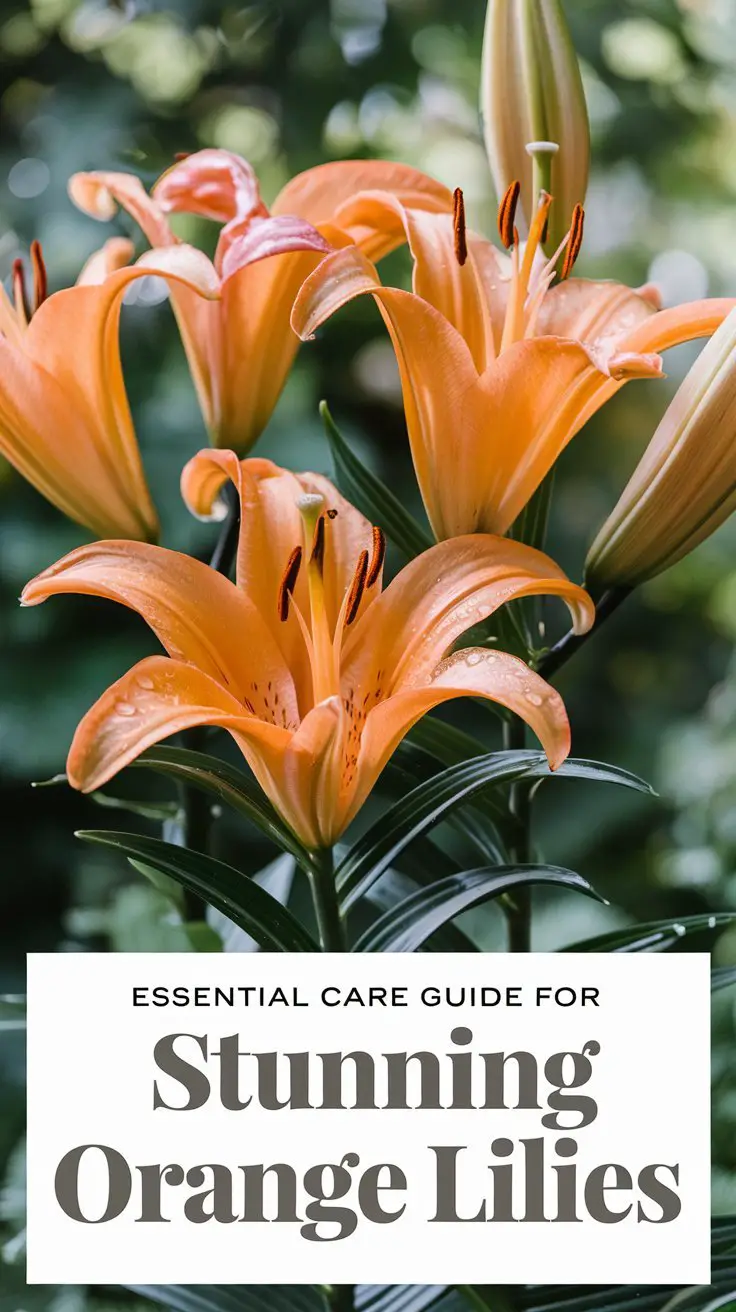Discover what orange lilies symbolize, how to grow them in pots, and their cultural significance. Learn about toxicity, varieties like tiger lilies, and creating stunning bouquets—with 10 years of gardening expertise.
I’ll never forget the summer I planted my first orange lilies. Their bold, sunset-colored petals seemed to shout, “Look at me!”—transforming my garden into a carnival of warmth. But when my neighbor asked, “Aren’t those toxic?” I realized there’s more to these flowers than their beauty. Over a decade of gardening, I’ve learned that orange lilies are storytellers, whispering tales of passion, wealth, and even danger. Let’s unravel their secrets together.
Here’s a clear and concise chart with verified information on Orange Lilies:
| Attribute | Details |
|---|---|
| Botanical Name | Lilium spp. (varieties include Lilium bulbiferum for Orange Lily) |
| Common Name | Orange Lily |
| Plant Type | Perennial |
| USDA Hardiness Zone | 4 to 9 |
| Sun Exposure | Full sun to partial shade |
| Soil Type | Well-drained, loamy, slightly acidic to neutral (pH 6.0-7.0) |
| Watering | Regular watering; keep soil consistently moist but not waterlogged |
| Growth Habit | Upright, clumping |
| Height/Spread | Height: 2 to 4 feet (60 to 120 cm); Spread: 1 to 2 feet (30 to 60 cm) |
| Special Features | Showy, trumpet-shaped flowers in vibrant orange; attracts pollinators like bees and butterflies |
What Do Orange Lilies Symbolize?

Orange lilies carry a kaleidoscope of meanings across cultures:
- Passion & Desire: Their fiery hue mirrors intense emotions, making them a favorite in romantic gestures .
- Wealth & Prosperity: In Chinese culture, they’re believed to attract fortune—perfect for housewarming gifts .
- Renewal: Like spring’s first light, they symbolize fresh starts .
- Caution: Victorians sometimes linked them to disdain or hatred due to their boldness 26.
Fun Fact: Tiger lilies (a type of orange lily) are the official 30th-anniversary flower, representing devotion .
Types of Orange Lilies: From Wild to Elegant
Not all orange lilies are the same! Here’s my breakdown of popular varieties:
| Type | Key Features | Best For |
|---|---|---|
| Tiger Lily | Black-spotted petals; wild, untamed look | Cottage gardens |
| Asiatic Lily | Smooth, vibrant blooms; no fragrance | Bouquets & pots |
| Daylily | Blooms daily; drought-tolerant | Borders & slopes |
| Calla Lily | Trumpet-shaped; elegant | Weddings |
Pro Tip: Pair tiger lilies with purple irises for a striking contrast, or mix Asiatic lilies with white roses for a classic bouquet .
How to Grow Orange Lilies in Pots (Yes, It’s Possible!)

I’ve grown orange lilies in containers for years—here’s my foolproof method:
- Choose the Right Pot: Opt for a 12-inch-deep container with drainage holes.
- Soil Mix: Use well-draining soil with compost. Lilies hate soggy roots!
- Planting Depth: Bury bulbs 3x their height (e.g., a 2-inch bulb needs 6 inches of soil).
- Sunlight: 6+ hours of direct sun daily. Less light = fewer blooms.
- Watering: Keep soil moist but not waterlogged.
My Hack: Add coffee grounds to slightly acidify the soil—they mimic the lilies’ natural woodland habitat .
For more soil tips, check my guide on balancing garden soil pH naturally.
Are Orange Lilies Poisonous? A Must-Read for Pet Owners
⚠️ Warning: All parts of orange lilies are toxic to cats, causing kidney failure if ingested . Dogs and humans may experience mild stomach upset.
Pet-Safe Alternatives:
- Marigolds
- Sunflowers
- Roses
Storytime: After my cat nibbled a leaf, I swapped my indoor lilies for African violets. Better safe than sorry!
Orange Lilies in Culture & History
Ancient Egypt
Linked to the goddess Isis, orange lilies symbolized fertility and rebirth. Egyptians used them in rituals for bountiful harvests .
Victorian England
A bouquet could mean “I desire you” or “I despise you”—context was everything! .
Modern Weddings
Their bold color adds drama to bouquets. Pair with eucalyptus for a rustic vibe or orchids for luxury.
FAQs: Your Orange Lily Questions Answered
Q: Can orange lilies grow in shade?
A: They tolerate partial shade but thrive in full sun. Less light = fewer blooms.
Q: What’s the difference between tiger lilies and Asiatic lilies?
A: Tiger lilies have spots and a wilder look; Asiatic varieties are smoother and better for cutting .
Q: How long do potted orange lilies last?
A: With proper care, 2-3 weeks in bloom. Extend their life by deadheading spent flowers.
Q: Are orange lilies invasive?
A: Daylilies (like ditch lilies) can spread aggressively. Stick to clump-forming types like Asiatic lilies.
Q: Where can I buy orange lilies near me?
A: Check local nurseries in early spring. For rare varieties, try Burpee or American Meadows.
Tools & Resources I Trust
- Royal Horticultural Society: Lily Care – Expert growing tips.
- ASPCA Toxic Plant List – Pet safety guide.
- University of Minnesota Extension: Bulb Planting – Science-backed advice.
- Missouri Botanical Garden: Tiger Lilies – Species deep-dive.
- NCBI Study on Lily Toxicity – Medical insights.
Final Thoughts
Orange lilies are like the extroverts of the garden—bold, unforgettable, and full of stories. Whether you’re gifting them for luck, growing them in pots, or avoiding them for your cat’s sake, these flowers teach us that beauty often comes with layers.
For more flower guides, explore my article on pet-safe plants for gardens or drop a comment below! Let’s grow mindfully.







One comment on “Orange Lilies: The Fiery Blooms That Speak Passion, Luck, and Renewal”